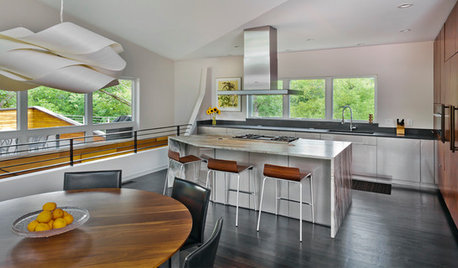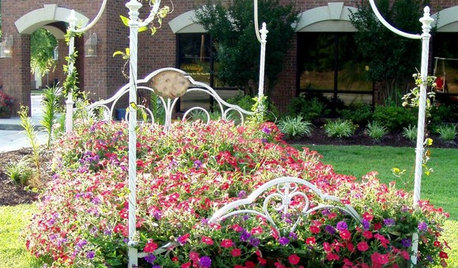Can I grow a tree upside down??
trace00969
17 years ago
Related Stories

REMODELING GUIDESLive the High Life With Upside-Down Floor Plans
A couple of Minnesota homes highlight the benefits of reverse floor plans
Full Story
GARDENING GUIDESYes, You Can Grow an Edible Garden on a Hot, Dry Site
Difficult garden spots don’t need to deter you from planting trees, herbs and other delicious food plants
Full Story
FALL GARDENING5 Fall Fruits You Can Grow in Containers
Brighten your porch or patio with a potted pomegranate, kumquat, blueberry bush or another great fall fruit
Full Story
GARDENING GUIDESGrow Your Own Privacy: How to Screen With Plants and Trees
Use living walls to lower your home and garden's exposure while boosting natural beauty in your landscape
Full Story
EDIBLE GARDENSHow to Grow Your Own European and Asian Pears
Try these trees for their good looks, delicious fruit and wide range of sizes — plus you can espalier them
Full Story
LIFEThe Polite House: How Can I Tell a Construction Crew to Pipe Down?
If workers around your home are doing things that bother you, there’s a diplomatic way to approach them
Full Story
CONTAINER GARDENSYes, You Can Grow a Plant In That
You can upcycle your old typewriter, paint cans, tires and many more things into places for your plants
Full Story
FRUIT TREESHow to Grow Your Own Persimmons
Sturdy and easy to care for, these trees offer bright fruit through winter — and keeping them in bounds is no sweat
Full Story
GARDENING GUIDESYes, You Can Grow Food in a Shady Yard
Your shady garden doesn’t have to be forever barren. Berries, herbs and other shade-loving plants can produce a delicious bounty
Full Story
EDIBLE GARDENSWhy Grow Quince? For Beauty, Fragrance and Old-Time Flavor
Delightfully perfumed fruit and lovely spring blossoms make this apple and pear cousin worth a spot in the garden
Full StoryMore Discussions








kylezo
trace00969Original Author
Related Professionals
Danbury Landscape Architects & Landscape Designers · Franconia Landscape Architects & Landscape Designers · Cincinnati Landscape Contractors · Coram Landscape Contractors · Deerfield Landscape Contractors · Fairfield Landscape Contractors · Harrisburg Landscape Contractors · Holtsville Landscape Contractors · Mission Bend Landscape Contractors · Pompton Lakes Landscape Contractors · White Bear Lake Landscape Contractors · Athens Decks, Patios & Outdoor Enclosures · Kernersville Decks, Patios & Outdoor Enclosures · Lansdale Decks, Patios & Outdoor Enclosures · Scotts Valley Decks, Patios & Outdoor Enclosureslucy
kylezo
trace00969Original Author
vampyrepyro420
trace00969Original Author
lucy
trace00969Original Author
callygirl085
trace00969Original Author
hooks
trace00969Original Author
lucy
trace00969Original Author
kylezo
tanyag
trace00969Original Author
kylezo
hooks
trace00969Original Author
lucy
trace00969Original Author
lucy
hawkja
hooks
trace00969Original Author
donz
trace00969Original Author
donz
hawkja
botanical_bill
lucy
robwilson
johnpeterknauth_hotmail_com
Ghettominibar
moochinka
Bill Roe
lehua49
gardengal48 (PNW Z8/9)
lehua49